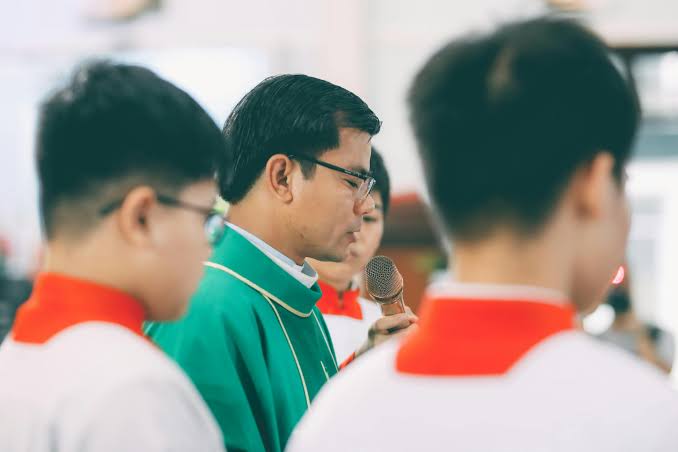Catholic facts
Difference and Similarities between Diocesan and Religious Priest
The Catholic Church has two main categories of priests: religious priests and diocesan Priests. While both serve crucial roles in the Church and share many similarities, they differ in several key aspects of their vocations, lifestyles, and responsibilities. This article will explore the nature of these two types of priesthood, highlighting their unique characteristics as well as their common ground.
- Diocesan Priests
Diocesan Priests, also known as secular Priests, are ordained to serve in a specific diocese under the authority of the local Bishop. They are often referred to as the “Parish Priests” that most Catholics encounter in their local churches.
Key characteristics of diocesan Priests:
a) Geographical assignment: Diocesan Priests typically serve within the boundaries of their diocese, moving between parishes as needed.
b) Secular life: While they take vows of Celibacy Poverty and Obedience, they manage their own finances and often live independently.
c) Pastoral focus: Their primary role is to serve the pastoral needs of their Parish community, including administering Sacraments, providing spiritual guidance, and managing Parish affairs.
d) Diocesan hierarchy: They report directly to their Bishop and are part of the diocesan structure.
e) Formation: Diocesan Priests usually complete their seminary training at institutions run by their Diocese or at regional Seminaries.
- Religious Priests
Religious priests belong to specific religious orders or congregations, such as the Jesuits, Franciscans, or Dominicans. They live according to the particular charism and rule of their order.
Key characteristics of religious Priests:
a) Order-specific mission: Their work is often aligned with their order’s specific charism, which could include education, healthcare, missionary work, or contemplative life.
b) Vows: In addition to celibacy and obedience, religious Priests take a vow of poverty, committing to communal ownership of goods.
c) Community life: They typically live in community with other members of their order.
d) Global mobility: Religious Priests can be assigned to work anywhere in the world where their order is present.
e) Specific charism: Each order has its own spiritual tradition and focus, which shapes the priest’s formation and ministry.
f) Formation: They undergo formation within their religious order, often in addition to standard seminary training.
Similarities between Diocesan and Religious Priests:
Despite their differences, diocesan and religious priests share many commonalities:
- Ordination: Both are ordained through the Sacrament of Holy Orders and possess the same priestly faculties.
- Sacramental ministry: Both can celebrate Mass, hear confessions, anoint the sick, and perform other sacramental duties.
- Celibacy: Both types of priests commit to a life of celibacy.
- Education: Both undergo extensive theological and pastoral training.
- Spiritual leadership: Both serve as spiritual leaders and guides for the faithful.
- Commitment to the Church: Both dedicate their lives to serving God and the Catholic Church.
Key Differences:
- Lifestyle: Diocesan priests often live more independently, while religious priests typically live in community.
- Financial management: Diocesan priests manage their own finances, while religious priests practice communal poverty.
- Obedience: Diocesan priests are obedient to their bishop, while religious priests are obedient to their superior and the rules of their order.
- Specialization: Religious priests often have specialized ministries based on their order’s charism, while diocesan priests typically have broader pastoral responsibilities.
- Geographical scope: Diocesan priests usually serve within their diocese, while religious priests can be sent globally.
Historical Context:
The distinction between diocesan and religious priests has its roots in the early Church. As Christianity spread, two models of priestly life emerged: those serving local communities (which evolved into diocesan priesthood) and those living in monastic communities (which developed into religious orders).
Throughout Church history, both forms of priesthood have played crucial roles. Diocesan priests have been the backbone of parish life, while religious orders have often been at the forefront of missionary work, education, and spiritual renewal movements.
Conclusion:
While diocesan and religious priests share the core vocation of priesthood, their distinct charisms and lifestyles offer diverse ways to serve God and the Church. This diversity allows for a rich tapestry of ministries and spiritualities within Catholicism, addressing the varied needs of the faithful and the broader society.
Understanding these differences and similarities helps Catholics and others appreciate the complex structure of the Church’s ordained ministry. It also highlights how the Church adapts to fulfill its mission through different forms of priestly vocation, each contributing uniquely to the life and work of the Catholic Church in the modern world.
About Author























